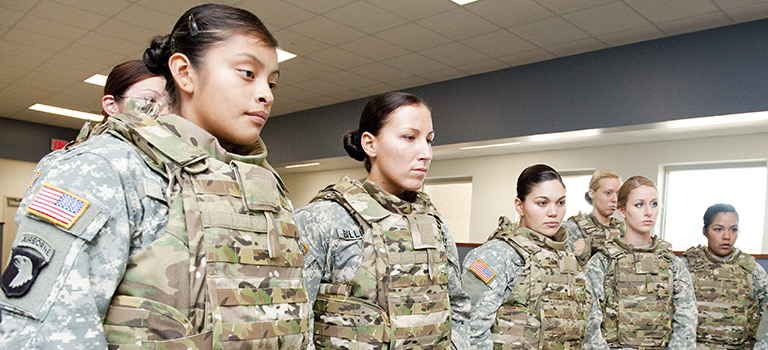The global cybersecurity market is expected to grow to $248.26 billion by 2023. The continued growth of cyberthreats creates a robust cybersecurity labor market, and there are over 520,000 unfilled positions in the United States alone. Cybersecurity is a promising career path; however, as is frequently discussed, it lacks gender diversity. Herein lays the question: how can we address the gender diversity challenge in cybersecurity? One promising way to address the gender diversity challenge in cybersecurity is to hire female veterans.
Addressing the Gender Diversity Challenge in Cybersecurity
Not only are female veterans highly skilled candidates, but most of them have received specialized training in various fields befitting the cybersecurity industry. Female veterans are more than qualified to fill roles and address the gender diversity challenge in cybersecurity; however, there are still issues that female veterans face as an entirety.
Issues for Female Veterans to Overcome in Order to Address the Gender Diversity Challenge in Cybersecurity and as a Whole
One of these issues is gender inequality, and while the gender inequality statistics have radically improved over the last decade, it is still alive and well. It is reported that 47% of women participate in the workforce as a whole, compared to 74% of men. Although these statistics are not specified, it is safe to surmise that female veterans are a part of the gender inequality. Notable too, is that even in active-duty women face an inequality/discrimination issue, being as though the Military is predominantly male, and females are considered the minority. Females make up a mere 16.5% of the Military proportion.
What else poses a threat for female veterans? There is not a clear mapping of military careers transitioning to cybersecurity careers. Without this mapping and without an employer possessing a clear understanding of how a veterans’ skills are applicable to a cybersecurity career in question, it makes the hiring process…complicated. Not to mention that most veterans have a difficult time explaining the importance of their jobs in the Military; therefore, complicating their ability to write out a resume with transferable skills. Without a clear understanding of transferable skills this can serve as a huge deterrent for female veterans finding careers in the cybersecurity industry.
Lastly, we address a sad truth when it comes to female veterans. Female veterans experience a higher unemployment rate than their male counterparts. A report reflecting COVID-19 numbers, states that female veterans came in at 6.7% of the unemployment rate.
What KSA’s Can Be Transferred to Cybersecurity?
According to Dr. Ameila Estwick’s article previously published in the United States Cybersecurity Magazine, a female veteran that possesses experience with Public Affairs and Marketing can implement their KSAs to cybersecurity careers that employ digital marketing, social media, branding and promotions. Female veterans that would join these careers would have the KSAs to use social media to boost businesses while maintaining good cybersecurity posture, thus protecting the company and their data online.
How about behavior? Veterans with training in human behavior may not seem like a proper fit; however, this is untrue. There are careers in behavioral analysis within the cybersecurity industry. These careers are in high-demand and for good reason. “The ability to detect abnormal behavior can aid significantly in securing data,” according to Paul Calatayud, CSO, at Palo Alto Networks.
Clearances? There are many jobs within the cybersecurity industry that require security clearances, namely those with government agencies. Hiring a female veteran that already has a top-secret clearance is much easier than waiting the year plus (forbidding any hiccups) that it would take a civilian to acquire this clearance. Even if a job does not require clearance, hiring a veteran that was entrusted by the Military with not only information but lives, speaks volumes to the type of person you would be asking to join your company.
And of course, technology. The Military uses some of the most advanced technology there is, and their systems are highly targeted by hackers as they contain such valuable information. If a female veteran has had any involvement with these systems, they are already prepared for a role in the cybersecurity industry.
Conclusion
There are resources out there to train, teach and prepare veterans for a career in the cybersecurity industry. The Federal Virtual Training Environment (FedVTE) provides FREE online cybersecurity training to veterans. Their courses are for all proficiency levels, from entry to advanced.
We must address the gender diversity challenge in cybersecurity and female veterans can not only fill these gaps, but in hiring female veterans, employers can address the issues that veterans face as well.
Lauren Abshire
Tags: Cybersecurity, Cybersecurity careers, Gender diversity, Gender Gap, Military, Veterans


